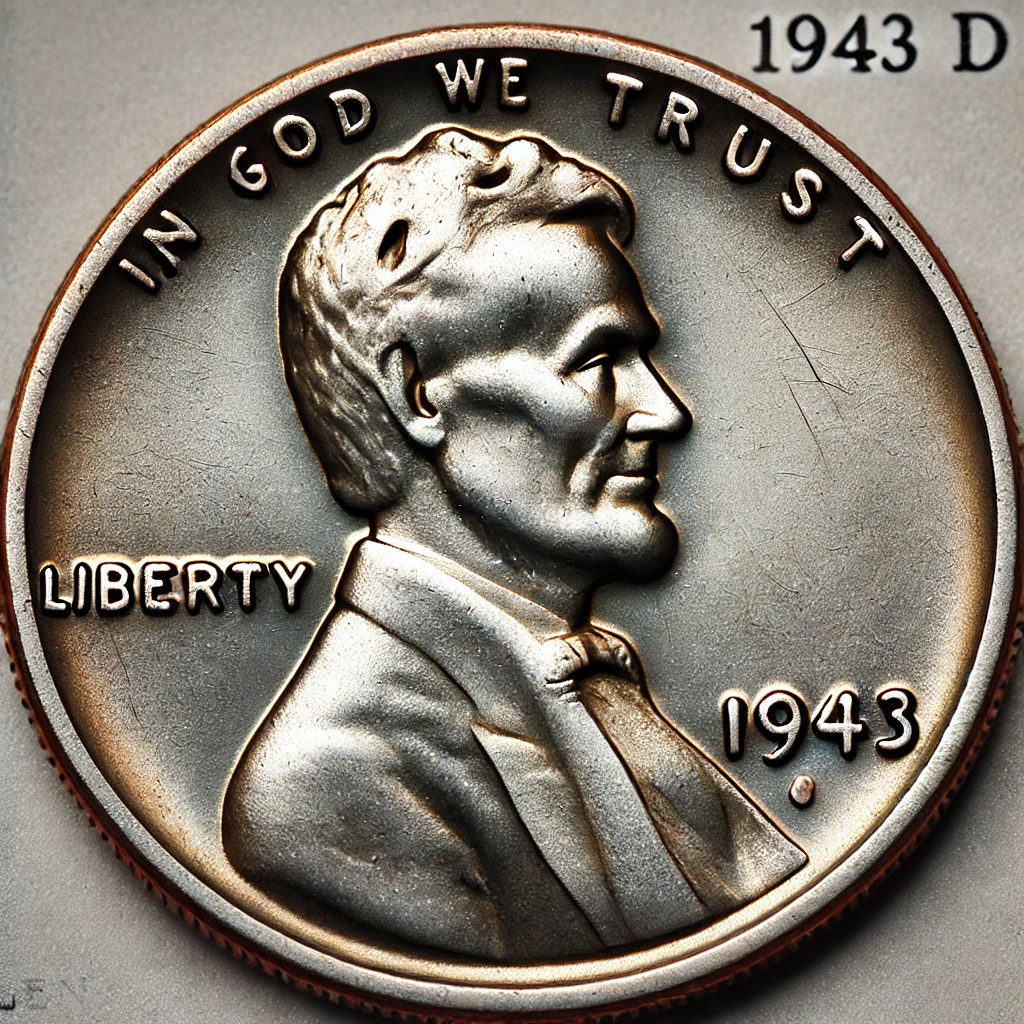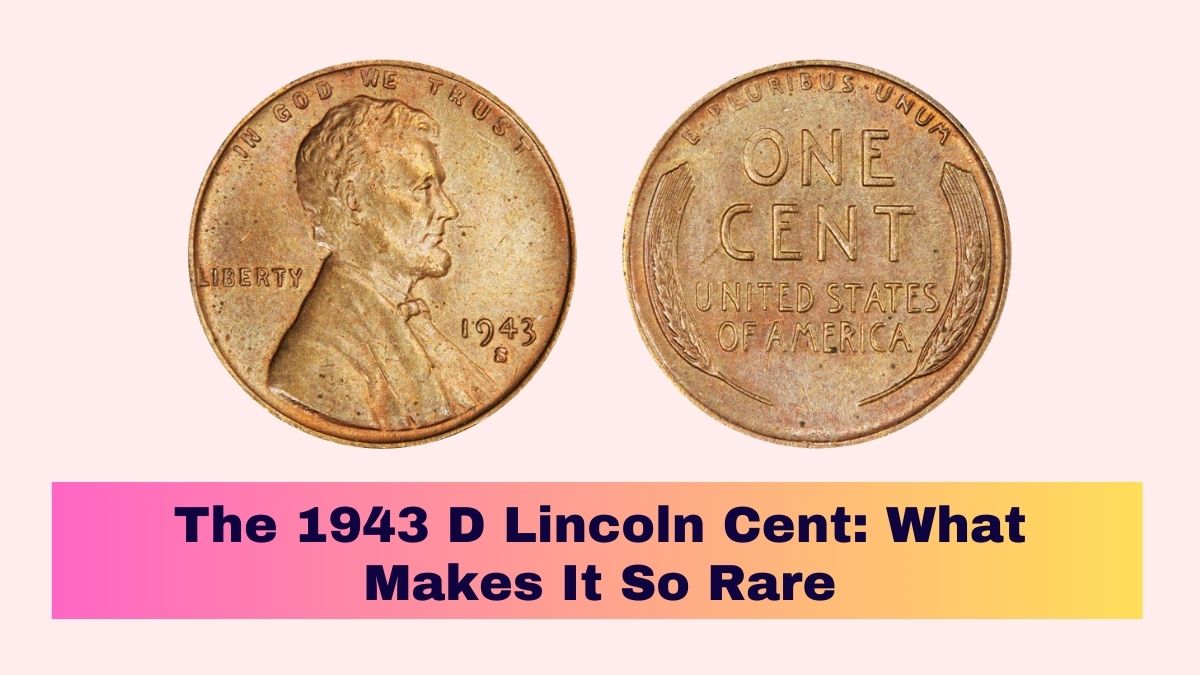The 1943 D Lincoln cent is one of the most intriguing and sought-after coins in American numismatic history.
Minted during the height of World War II, this penny has become iconic due to its unique composition and the rarity of certain error coins that emerged during its production.
Below, we explore why this particular coin is so rare, its history, key details, and the current value of different versions of this fascinating penny.
The History Behind the 1943 D Lincoln Cent
In 1943, the United States Mint faced a significant shortage of copper due to its heavy use in war materials. To address this, the U.S. Treasury decided to produce pennies made from zinc-coated steel instead of the traditional bronze.
As a result, the U.S. Mint produced over one billion steel cents at its Philadelphia, Denver, and San Francisco mints.
The Denver mint alone struck 217,660,000 coins, including the elusive and rare 1943 D Lincoln cent on a copper planchet.
The Composition of the 1943 D Lincoln Cent
The majority of the 1943 Lincoln pennies were produced using steel coated with zinc, giving them a distinct silver-like appearance compared to the usual copper pennies.
These steel pennies were relatively common, but a small number of 1943 Lincoln pennies, including a famous Denver mint coin, were mistakenly struck on leftover copper planchets from 1942.
These copper pennies are considered the rarest variations of the 1943 pennies.
| Mint | Composition | Mintage | Current Value (Uncirculated) |
|---|---|---|---|
| Denver | Zinc-coated Steel | 217,660,000 | $3.30 to $192 |
| Denver | Copper Planchet (Error) | Fewer than 10 known | Up to $1.7 million |
Why Is the 1943 D Lincoln Cent So Rare?
Several factors contribute to the rarity of the 1943 D Lincoln cent:
- Copper Planchet Error: The most valuable 1943 D pennies were accidentally minted on bronze or copper planchets from 1942. These coins are exceptionally rare, with only a few known specimens. One such coin sold for $1.7 million in 2010.
- D over D Mintmark Error: Another rare variety is the “D over D” mintmark error, where the mintmark was struck twice. This error is clearly visible and is highly valued by collectors.
- Zinc-Coated Steel Variations: Though the majority of 1943 pennies were steel, their condition plays a role in their rarity. Uncirculated, gem-quality versions of these steel pennies can fetch a significant price, especially in higher mint grades.
The 1943 Copper Cent: The Ultimate Treasure
The copper versions of the 1943 Lincoln penny are legendary in the world of coin collecting. It’s believed that fewer than 10 copper cents from the Denver Mint still exist today.
These coins weigh around 3.11 grams (compared to 2.7 grams for the steel versions) and do not stick to a magnet, making it relatively easy for collectors to identify them.
Current Values of 1943 D Lincoln Cents

The value of a 1943 D Lincoln cent depends on several factors, including its composition, mint errors, and overall condition.
- Steel Pennies: These coins, while not extremely rare, still have value, especially if in mint or uncirculated condition. Common steel pennies in worn condition are worth around $0.22, but gem uncirculated versions can be valued anywhere from $8 to $45 or more.
- Copper Pennies: These are the real treasures. A copper 1943 D Lincoln cent in uncirculated condition can fetch astronomical prices, reaching upwards of $1.7 million in some auctions.
| Condition | Estimated Value (Steel) | Estimated Value (Copper) |
|---|---|---|
| Good (G-4 to G-6) | $0.22 | N/A |
| Extremely Fine (XF-40 to XF-45) | $0.50 | N/A |
| Gem Uncirculated (MS-65 to MS-66) | $8 to $45 | N/A |
| Superb Gem Uncirculated (MS-67+) | $111 to $192 | N/A |
| Uncirculated (Copper Planchet) | N/A | Up to $1.7 million |
Conclusion
The 1943 D Lincoln cent remains one of the most fascinating coins for collectors due to its historical significance and the valuable copper planchet errors.
While steel pennies are relatively common, the rarity and high value of the copper versions have cemented this coin’s place in numismatic history. If you’re lucky enough to own one of these rare coins, you could be sitting on a small fortune.
FAQs
1. Why were the 1943 Lincoln pennies made of steel?
The U.S. Mint made the 1943 pennies out of steel to conserve copper for military equipment during World War II.
2. How can I tell if my 1943 penny is steel or copper?
Steel pennies are magnetic, while copper ones are not. Copper pennies also weigh slightly more (3.11 grams compared to 2.7 grams for steel).
3. What is the value of a 1943 D Lincoln cent in circulated condition?
Steel versions of the 1943 D Lincoln cent in circulated condition are generally worth between $0.22 and $0.50, depending on their grade.
4. How rare is the 1943 D copper penny?
The 1943 D copper penny is extremely rare, with fewer than 10 known to exist. These coins can sell for over $1 million at auction.
5. What are the key errors to look for in a 1943 D Lincoln cent?
The most valuable errors include the D over D mintmark error and the rare copper planchet error.
References
- Coinappraiser.com – History of the 1943 Steel Lincoln Cent
- Rarest.org – 1943 Lincoln Wheat Penny Value Guide
- PCGS.com – 1943 D Lincoln Wheat Cent Overview
- CoinWeek.com – 1943-D Copper Cent History & Value















